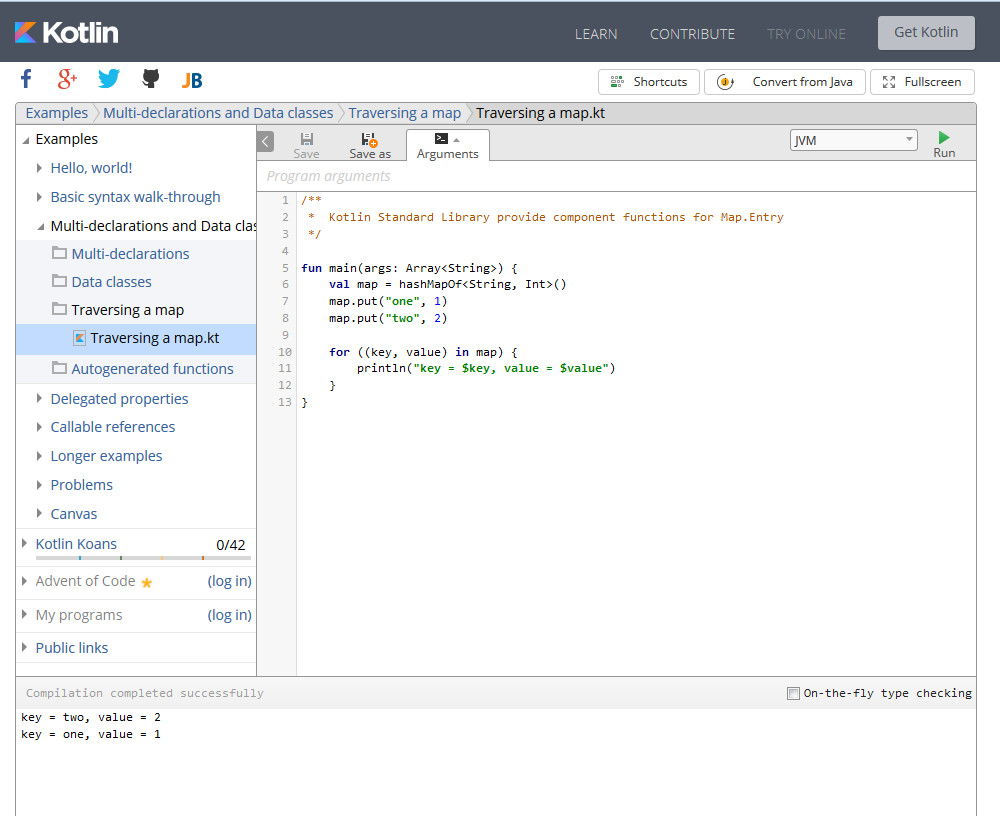
PointsSb.Append($"\n") Īs you see, each run in the loop I get two results from the regex search and as a result I tell the for loop to increment by two to avoid collision. Here is what the solution looks currently: var pointsParsing = Regex.Matches(htmlBody, "(.*?)", RegexOptions.IgnoreCase | RegexOptions.Compiled) įor (var i = 0 i < pointsParsing.Count i+= 2) So I use regex and it works just fine but now I'm porting my code to using Kotlin and the solution I have is not porting over well. I have a string that's in html and I need to parse a table so that I can get the data I need out of that table and present it in a way that looks good on a mobile device. These classes are not the child of the Array class but have the same properties and functions as an Array class.I have an interesting issue.

To create their instances use intArrayOf(), byteArrayOf(), doubleArrayOf(), longArrayOf() respectively. There is IntArray() class for Integer, ByteArray() class for Byte, DoubleArray() for Double, LongArray() for Long. Kotlin also provides built-in arrays for the primitive data type (Short, Byte, Int) to avoid using templates (e.g Array) and also has better performance than the same array which is using the template. * create an integer array of size 10 and for every index 'i' store the value in it using (i+1) * 5 */ val tableOfFive = Array( 10, Let’s see different ways to use it efficiently in the following code snippet

The set() function is used to assign the required value to a specified index. The get() function is used to retrieve a value at index passed as a parameter. Kotlin provides easy functions to create an instance of an array. Kotlin Array arrayOf() Example: Using the library function In Kotlin, there are three ways to create an array that will be explained thoroughly along with the code examples with its output that will help you understand better.ġ. Read Also : How to Create and Run First Kotlin Project The Array class contains useful functions like get(), set() and properties like the size.

In Kotlin, arrays are considered as basic data types and represented by Array class. In most of the programming languages, data in an array is stored linearly in the volatile memory. Array is one of the fundamental and simplest data structures in the programming languages in which each of the elements is identified by an index/key.


 0 kommentar(er)
0 kommentar(er)
